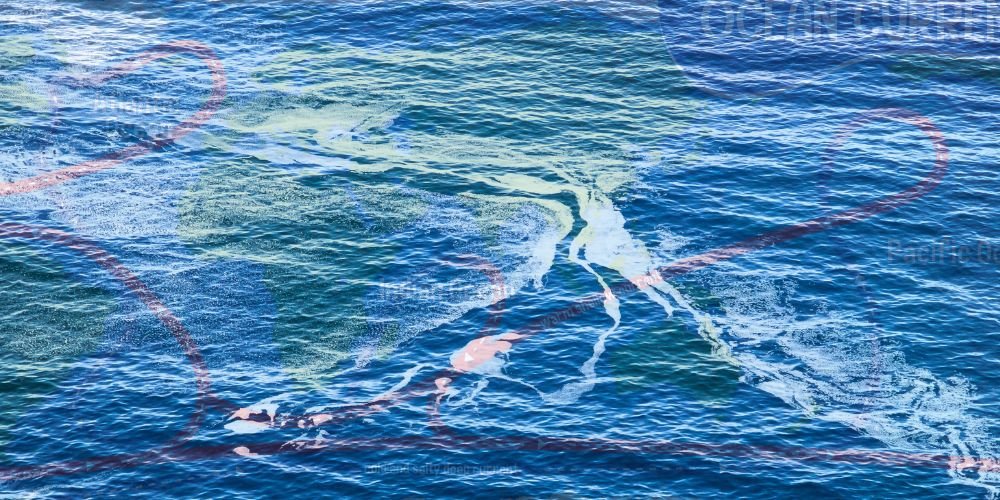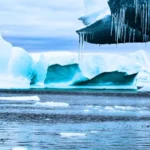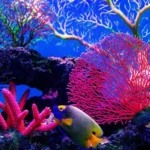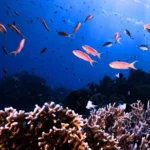Ocean currents, the ceaseless movement of seawater across the globe, represent a fundamental aspect of Earth’s dynamic system. This article explores the intricate world of ocean currents, unveiling their significance, tracing the science behind their formation, examining the diverse types of currents, and envisioning their profound impact on climate, marine life, and global ecosystems.
The Significance of Ocean Currents
Ocean currents play a pivotal role in shaping the world’s oceans and influencing the climate of coastal regions. These massive flows of seawater are like the planet’s circulatory system, redistributing heat, nutrients, and marine life on a global scale. Understanding the significance of ocean currents is essential for comprehending the interconnectedness of Earth’s environmental systems.
Climate Regulation and Heat Distribution
Ocean currents are integral to regulating Earth’s climate by redistributing global heat. Warm ocean currents transport tropical heat towards higher latitudes, moderating temperatures in colder regions, while cold currents carry polar waters towards the equator. This heat exchange helps maintain a balanced climate and influences weather patterns.
Nutrient Transport and Marine Productivity
Ocean currents act as conveyor belts for nutrients essential for marine life. Upwelling currents bring nutrient-rich waters from the depths to the surface, fueling the growth of phytoplankton and supporting thriving ecosystems. This nutrient transport is vital for the productivity of fisheries and sustains diverse marine habitats.
Weather Patterns and Atmospheric Circulation
The interaction between ocean currents and atmospheric circulation patterns significantly influences weather systems. Warm currents contribute to the intensification of tropical storms, while cold currents can lead to fog formation and influence precipitation patterns along coastlines. Understanding these interactions is crucial for accurate weather predictions and climate modeling.
Science Behind Ocean Currents
The formation and movement of ocean currents are governed by a combination of factors, including temperature, wind patterns, the Earth’s rotation, and the ocean floor’s topography. Delving into the science behind ocean currents provides insights into their complex and interconnected nature.
Thermohaline Circulation: The Global Conveyor Belt
Thermohaline circulation, the global conveyor belt, is a key driver of ocean currents. It is influenced by variations in temperature (thermo) and salinity (haline) of seawater. Surface waters heated near the equator become denser as they cool and move towards higher latitudes, eventually sinking and forming deep ocean currents.
Ekman Transport and Surface Winds
Surface winds, driven by the Earth’s rotation and atmospheric circulation, are crucial in forming surface ocean currents. The Ekman transport mechanism describes how wind stress at the ocean’s surface causes water to move at an angle to the direction of the wind, forming surface currents.
Coriolis Effect and Ocean Gyres
The Coriolis effect, a consequence of the Earth’s rotation, influences the direction of ocean currents. In the Northern Hemisphere, currents are deflected to the right, while in the Southern Hemisphere, they are deflected to the left. This phenomenon contributes to forming large circular systems known as ocean gyres.
Coastal Upwelling and Downwelling
Coastal upwelling and downwelling are localized phenomena that play a crucial role in nutrient cycling. Upwelling occurs when wind-driven surface waters move away from the coast, allowing nutrient-rich cold water from the depths to rise. Downwelling, on the other hand, involves the sinking of surface waters and is associated with the convergence of ocean currents.
Diverse Types of Ocean Currents
Ocean currents exhibit diverse characteristics, from swift surface currents to slow, deep-sea currents. Exploring these currents provides a comprehensive understanding of their roles in shaping the oceanic environment.
Surface Currents: Fast-Flowing Highways
Surface currents in the ocean’s upper layer are driven primarily by wind and the Coriolis effect. These currents can extend across vast distances and play a crucial role in redistributing heat, influencing climate, and facilitating the movement of marine life, including migratory species.
Deep Ocean Currents: Thermohaline Circulation
Deep ocean currents, driven by variations in temperature and salinity, form part of the thermohaline circulation. These currents can extend thousands of meters below the ocean surface, connecting the world’s oceans in a continuous flow. Deep ocean currents are vital in regulating global climate patterns and nutrient distribution.
Western Boundary Currents: Intensified Flow
Western boundary currents, such as the Gulf Stream and the Kuroshio Current, are fast-flowing currents found along the western edges of ocean basins. These narrow, deep currents carry warm water poleward, influencing weather and marine ecosystems along coastlines.
Eastern Boundary Currents: Cooler Coastal Currents
Eastern boundary currents, like the California Current and the Canary Current, are cool, nutrient-rich currents along the eastern edges of ocean basins. These currents support marine productivity through upwelling, providing nutrients for phytoplankton and sustaining diverse marine life.
Impact on Marine Life and Ecosystems
Ocean currents profoundly impact marine life and ecosystems, influencing species distribution, migration patterns, and the productivity of coastal habitats. Understanding these interactions is crucial for marine conservation and fisheries management.
Migration Routes and Marine Habitats
Ocean currents serve as natural highways for migratory species, including fish, marine mammals, and sea turtles. Many species follow specific current pathways during different life stages, such as spawning or feeding, shaping their migration routes and influencing the distribution of populations.
Coral Reefs and Upwelling Currents
Upwelling currents play a vital role in supporting the health of coral reefs. The nutrient-rich waters brought to the surface through upwelling provide essential nutrients for the growth of coral polyps and the diverse array of marine life that inhabits these vibrant ecosystems.
Impact on Fisheries and Commercial Fishing
The productivity of fisheries is closely linked to ocean currents, particularly those that cause upwelling. Nutrient-rich waters support the growth of phytoplankton, forming the base of the marine food chain. Understanding the relationship between currents and fisheries is crucial for sustainable and responsible commercial fishing practices.
Anthropogenic Impact and Climate Change
Human activities, including climate change and pollution, increasingly affect ocean currents, leading to shifts in their patterns and intensities. Recognizing the anthropogenic impact on ocean currents is essential for mitigating the consequences and promoting sustainable practices.
Climate Change and Altered Current Patterns
Climate change, driven by human-induced factors such as greenhouse gas emissions, alters ocean currents. Changes in sea surface temperatures, melting ice caps, and shifts in atmospheric circulation patterns contribute to variations in current patterns, impacting weather systems and marine ecosystems.
Plastic Pollution and Ocean Currents
Ocean currents play a significant role in the distribution of plastic pollution across the seas. Floating debris, including plastic waste, can be transported vast distances by currents, forming oceanic garbage patches. Addressing plastic pollution requires a comprehensive understanding of current patterns and their impact on marine environments.
Sea Level Rise and Coastal Currents
The rise in sea levels, attributed to global warming and ice caps melting, influences coastal currents. Changes in current patterns can contribute to coastal erosion, altered sediment transport, and shifts in the distribution of marine habitats, affecting coastal ecosystems and human communities.
Conclusion
Ocean currents, the dynamic force beneath the surface of the seas, weave a complex tapestry that connects the world’s oceans, climates, and ecosystems. From regulating global temperatures to shaping the distribution of marine life, these currents are a cornerstone of Earth’s environmental equilibrium. As we navigate the challenges of climate change and anthropogenic impact, understanding the intricacies of ocean currents becomes paramount for safeguarding our oceans’ health and preserving our planet’s delicate balance.










